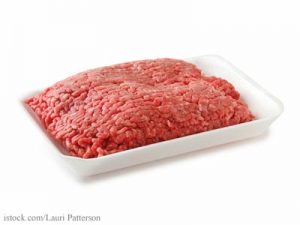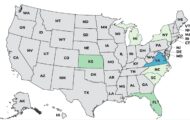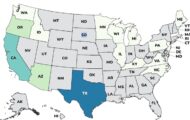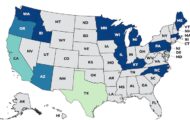The USDA said last Friday, January 27, 2012, that they don’t believe they will be able to pinpoint the source of the Salmonella-tainted beef the Hannaford chain used to make ground beef. That beef caused an outbreak that sickened 19 people in December 2011 with an antibiotic-resistant strain of the bacteria.
 The USDA and FDA can track down the original source of contaminated food “90% of the time”, according to Richard J. McIntire, a spokesman for the Food Safety and Inspection Service, a branch of the USDA.
The USDA and FDA can track down the original source of contaminated food “90% of the time”, according to Richard J. McIntire, a spokesman for the Food Safety and Inspection Service, a branch of the USDA.
The government has said that “high risk practices” used by the store, such as grinding together beef from various sources and trimmings from meat sold in the store, contributed to the outbreak. The store also had slack record-keeping of beef sources that made it impossible to track the source of the bad meat. That lack of record-keeping does not violate federal law, but that may change this year.
Hannaford also ground meat from different sources and trim batches without cleaning the equipment between grindings, which may have cross-contaminated a large batch of the ground beef with a small batch of contaminated meat. Once again, there is no federal regulation that requires equipment cleaning in between batch grindings, although the USDA “recommends it.”
The USDA has made a habit of proposing recommendations about “best practices” to beef processors and handlers, but not making those recommendations legal requirements. Unfortunately, many retailers and processors do not follow the best practice guidelines, putting consumers at risk.
Hannaford has said they now keep track of beef sources and clean their equipment before and after grinding trimmings. Since trimmings from beef cuts have a lower sanitary standard, it’s possible that those trimmings contaminated the ground beef. There’s just no way to know for sure.
Representative Chellie Pingree (D-Maine) has said that if the USDA doesn’t turn these recommendations into legal requirements soon, she will write legislation to force those practices into law.
This is the timeline of the Hannaford outbreak:
- December 16, 2011: Hannaford recalls ground beef after 7 hospitalized with Salmonella poisoning.
- December 19, 2011: The government announces that slack record-keeping impedes the investigation.
- December 20, 2011: Sixteen people are now infected with the strain of Salmonella typhimurium found in Hannaford ground beef.
- December 21, 2011: The Center for Science in the Public Interest urges the USDA to classify antibiotic-resistant Salmonella in ground meat an illegal adulterant.
- December 31, 2011: The number of victims in the Hannaford ground beef outbreak rises to 18.
- January 5, 2012: The U.S. Centers for Disease Control and Prevention updated their report on Hannaford ground beef, stating that 19 people in seven states have been infected.
- January 6, 2012: Cargill, Inc. was contacted by the USDA as part of a “trace-back” move of beef suppliers. Cargill stated their beef was not the source of the outbreak.
- January 7, 2012: The CDC discovers that the Salmonella Typhinurium that infected 19 people from Hannaford ground beef is the same strain. The DNA in the bacteria that infected all of the patients is a match.
- January 17, 2012: Hannaford ground beef Salmonella outbreak may not be over. Consumers could have the beef stored in freezers and are urged to check them and discard or return the meat.




